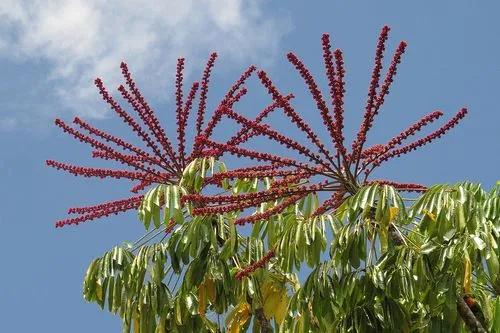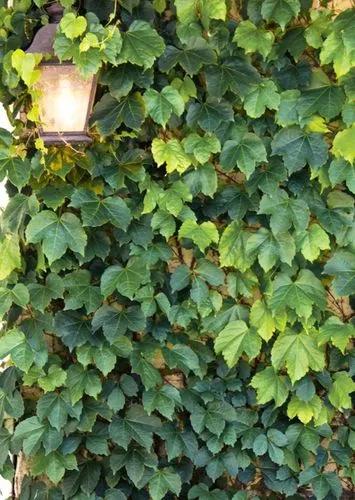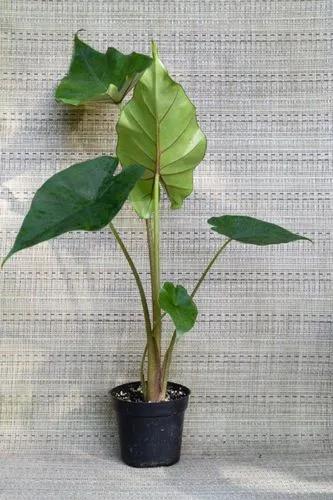This fast-growing crawling plant is one to count on if you want to cover up any dull wall or space in your garden. It is a sturdy, easy-care groundcover, making it an easy replacement for spots in the garden where grass finds it difficult to grow. Algerian Ivy requires little to no care besides pruning and thrives in shady spots, so it makes the perfect match to make your garden good-looking all around, not just in sunny spots.
Algerian ivy Care
Hedera algeriensis



Algerian Ivy grows with thick vines and dark green leaves, having the younger leaves spotted in various shades, from light green to silvery green and beige. It tolerates conditions in which other plants might not thrive, including salty air, so Algerian Ivy is a great choice if you have coastal-facing parts of your garden or its surroundings. Some other names by which you will find it are Canary Island ivy, Madeira ivy, and Canary ivy. Its origins are located in the Western side of Africa, where it can quickly reach a length of 40 ft (12 m), but with just a little bit of care, you can also get this plant to cover an impressive part of its designed space.
How to Care for the Plant

Water

Although this plant might come off as a little thirsty for its leaves to stay shiny and strong, Algerian Ivy can also resist drought. However, if you grow this plant in a warmer climate, water before the soil gets completely dry; it always likes to have a little moisture. If you keep it indoors, make sure you mist the plant frequently and that you keep it in areas with more humidity where it can thrive. Don’t overwater it, or it might develop root rot.

Pruning

As Algerian Ivy grows fast and will cover up any space you allow, pruning is important for keeping it good-looking and maintaining proper airflow between its vines. Prune in late autumn to the desired shape. New light green leaves will grow as spring arrives. Don’t hesitate to prune newly sprung runners, or the plant might expand a little more than you intended.

Fertilizer

Although it does well by itself and grows quickly, Algerian Ivy can use some liquid fertilizer or soil compost during the growth period. The glossy leaves of this vine thrive better if fertilized every 6 weeks in early spring.

Sunlight

Don’t keep your Algerian Ivy in full sun as the leaves might get crispy and burn, and the soil dries out too quickly. Keep it in partial sun or full shade. However, if you want more contrast to the leaves of your Ivy, you can keep it in areas with bright indirect light, as more shade tends to put a dark green tone on most of the leaves.

Soil

Algerian Ivy is not pretentious when it comes to soil type. You can grow it in almost any type of soil, from loam to sandy soil and even acidic or chalky. As long as the soil does not retain a lot of water, you are good to go. It thrives best in soil that locks in more moisture, but it won’t suffer too much if you don’t have that around.

Propagation

You can propagate Algerian Ivy from seed or with cuttings, but the cuttings method is the most efficient and common, consuming less of your time and energy. Simply cut the vines in areas with semi-hardwood and place the new cuttings directly in the soil or into the water until new roots start to grow. Offer it some more support while the cuttings are still young by giving it a cane to climb onto.

Temperature

Temperature is not something to worry about when it comes to Hedera algeriensis. It can resist temperatures down to 10°F ( -12°C), so harsh winters do not really affect them. Make sure you keep it protected from windy spots or places where ice forms, and it will go dormant only to gain its powers back in early spring with the first signs of warmth. The ideal temperature range is 50-80°F (10-27°C).

Container

Although you can grow it in containers and potting is used with propagation, keeping Algerian Ivy in a pot can be a great headache. As it grows pretty fast, you will need to prune it constantly to ensure it does not get tangled in the pot. It outgrows any container quickly, so it is easier to plant it directly in the soil with some support that it can climb on. If you choose to place the Ivy in a pot, make sure you use one with drainage holes.

Fun fact

Algerian Ivy can be a lifesaver plant. The title may be a bit too fancy, but it is often planted for erosion control in rough areas with steep banks or slippery slopes, making it more than a simple decorative plant.

Popularity

9,083 people already have this plant 1,875 people have added this plant to their wishlists

Common pests

The pests that this plant attracts might be the greatest challenge you will encounter with the Ivy, as it is generally a low-maintenance plant. From aphids to loopers, mealybugs, scale, mites, and snails, Algerian Ivy attracts them all, but it is equally easy to get rid of them. Use insecticidal soap or neem oil on the leaves, vines, and pests should stay away from your plant. Ensure you prune it consistently and that the airflow is proper to prevent these pests from reappearing.

Frequent diseases


Botanist’s tips

Discover more plants with the list below
Popular articles






